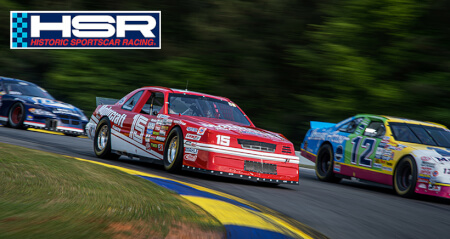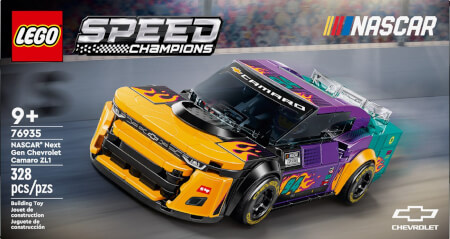August 2nd 2023
Cup Series teams wrap up two-day test for 2024 package at Richmond
Testing at Richmond Raceway began Monday with optimism about what a new splitter might offer when crafting a 2024 short track and road course rules package for the NASCAR Cup Series. After altering some of the configurations Tuesday, NASCAR competition officials and teams gained insight into what other aerodynamic changes and a new direction with Goodyear tire compounds might offer.
Testing continued Tuesday at the 0.75-mile track, with the six participating teams cycling through softer Goodyear tire options. In earlier aerodynamic modeling, the new “lift splitter” or “up/down splitter,” so labeled because of its contours, had shown gains in downforce for trailing cars that would, in theory, reduce the negative effects of turbulent, “dirty” air in traffic — with computer modeling and wind-tunnel sessions supporting that notion.
After trying out the configuration in a series of group runs Monday, drivers reported back that the feel was not drastically different from the difficult conditions in Sunday’s 400-lap race here. “A lot of the feedback from drivers was it wasn’t quite enough,” Dr. Eric Jacuzzi, NASCAR vice president of vehicle performance, noted after Monday’s sessions, but those observations from on-track testing at one of the circuit’s tougher circuits prompted competition officials to change up for Day 2.
The original plan was to concentrate on tires Tuesday, exploring softer compounds and different tire construction that could provide more grip and fall-off. Officials followed through with that but also added another group run to the Tuesday schedule and switched to remove the rear diffuser and add a 4-inch rear spoiler (up from the current 2-inch blade) to adjust the balance. Jacuzzi said an extension was also added Tuesday to the downturned section of the front splitter to increase its effect.
Those aero changes, Jacuzzi said, were tested separately on a control group of tires before trying other Goodyear compounds.
“We were pretty happy with how that looked,” Jacuzzi said. “Went to the second set of tires, which had a little thicker tread on them, so a lot more grip in those. Drivers were really positive about that, said it laid down a lot of rubber, they could move around a lot behind each other. So yeah, it was pretty good, pretty positive outcome. Got some positive comments that the diffuser not being there made the car a little more forgiving. On corner entry, they felt like they could slide around a little bit more and move around. So we were pretty happy with that, for sure.”
Both days were divided by sessions of single-car runs, then group sessions where cars lined up in three rows of two. After simulating race conditions for roughly 30 laps, officials inverted or shuffled the order, then ran approximately 30 laps more. Monday, teams ran through varying ride-height settings and made one run with a filler panel placed behind the splitter.
In working with varying Goodyear tire compounds and construction, Stewart-Haas Racing driver Ryan Preece previewed Tuesday as “a new day, for sure. I know we’re going to be doing some tire testing, and after what we were all talking in there (in the debrief), and kind of expressing what we want as drivers to be able to do so we can put on a better show is to be able to lean on that tire. So I feel optimistic with some of the options they brought. If we can lean on it and then, as drivers, beat them up, hopefully, that’ll bring on the fall-off as well.”
Noah Gragson, driver of the Legacy Motor Club No. 42 Chevrolet, seconded that notion after Tuesday’s afternoon runs.
“That thicker-treaded tire, I’ve been calling it, was a lot better,” Gragson said. “I thought our balance shift from beginning to end of the run was a lot better. It didn’t change five or six out of 10 numbers from the beginning to end like the prior tire was, so I thought that was a big gain. Really the tire was the biggest thing that we hit on this weekend.”
The test was originally scheduled for July 17-18 at New Hampshire Motor Speedway, but inclement weather forced a postponement and a move to Richmond. Christopher Bell, driver of the No. 20 Joe Gibbs Racing Toyota, said that the grip level of the flatter 1.058-mile oval in Loudon, New Hampshire, may have produced a different outcome.
“The track is so slick that you are naturally going to get spread out because you’re sliding around like crazy,” Bell said after Monday’s session. “I mean, all six of us are just complaining about being sideways loose, and you know the tracks that we complain about the aero package are places that are high grip like Phoenix, Martinsville. Loudon would have been better than here, for sure. … We’re struggling because we’re tight in traffic, and here today, you’re just sliding around, so you’re never really tight.”
Jacuzzi said Monday that after a review of the Richmond test, the next at-track steps in development of a new short track/road course package for 2024 would likely take place after the Cup Series Playoffs in the offseason. Tuesday, however, Jacuzzi said that competition officials plan to run the same trial configuration (splitter, splitter extension, 4-inch spoiler, no diffuser) at Indianapolis Motor Speedway, piggybacking onto a Goodyear tire test scheduled Aug. 14-15 on the 2.5-mile oval on the heels of the NASCAR race weekend on the 2.439-mile road course layout. Drivers scheduled to participate are Chase Briscoe (No. 14 Stewart-Haas Racing Ford), Alex Bowman (No. 48 Hendrick Motorsports Chevrolet) and Ty Gibbs (No. 54 Joe Gibbs Racing Toyota).
“We actually plan to run that package we just did for two reasons,” Jacuzzi said. “One, Indy is obviously a track with a narrow racing groove, but the main thing is, coming out of here, the drivers said, ‘Hey, really feeling the tire a lot. The aero’s a small part of the cornering power of the car.’ So going to a place like Indy, where the speed is much higher, it should give us a really good read on whether that’s an improvement. So it’s another opportunity for us to evaluate it in that environment. It’s just gonna be a better aero test environment.”
Jacuzzi said more discussion would need to take place before trying the configuration at other track types. William Byron, driver of Hendrick Motorsports’ No. 24 Chevrolet, said that he felt the conversation after Monday’s test was productive and that the lines of communication remain open.
“Everyone’s real cordial and trying to work through the different options,” Byron said. “I feel like they’re really open to suggestions, NASCAR is really open to it. So you know, I think it’s really good dialogue between everyone, and they believe us. They believe what we’re talking about on the race track, and I feel, yeah, it’s good. There’s a good connectivity there to make changes, and I feel like there’s some more ideas yet to still work on.”














